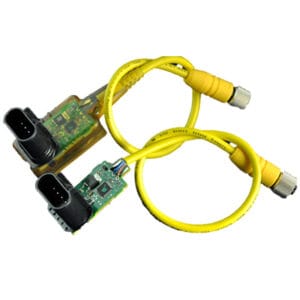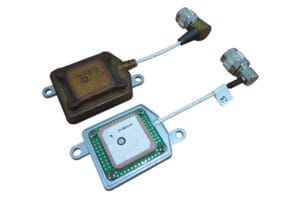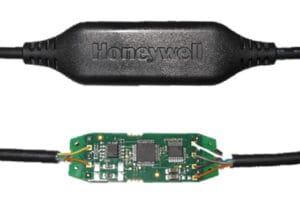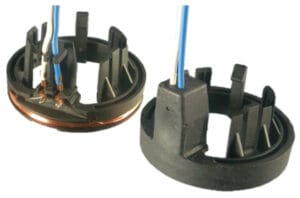Low pressure molding materials in cable & wire Assembly
By hdhhd shhsbbs / 2025年6月2日
Low pressure molding materials are a special way to keep wires safe. It uses soft plastic that is warmed up. This plastic covers the wire parts and fills in all the gaps. When it cools, it becomes a strong shell. This shell keeps out water, dirt, dust, and anything that could hurt the wires. It also helps hold everything in place. That stops wires from moving too much or breaking. The final look is clean and neat. This method is also quick and does not cost much, which makes it a great choice.
Why Low Pressure Molding Materials Is Used
Low pressure molding is a simple and safe way to protect wires and small parts. It works by using a soft plastic that melts with low heat. This plastic is poured or pushed into a mold that shapes it around the wire or part. Once the plastic cools, it turns hard and strong. The hardcover keeps water, dirt, and oil from getting in. This helps stop damage. It is perfect for protecting electronics and small things that can break easily. Since the heat and pressure are low, it is safe for tiny parts like plugs and sensors. This way of covering things is fast, neat, and helpful for many jobs.

How Does Low Pressure Injection Molding Work
Let’s look at the steps. First, a mould is made to match the shape of the item that needs covering. The mould is often made from light metal. Then, the part, like a wire or small board, is placed inside the mold. A low pressure injection molding machine melts soft plastic called hotmelt. This melted plastic is slowly pushed into the mold. It wraps around the part gently. This does not harm the part inside. After a short time, the plastic cools down and becomes solid. When the mould opens, the part has a nice, strong cover. It is now safe to use. This process is easy to do and works very well.
Is Low Pressure Overmolding Good for Cables & Wires
Low pressure overmolding is excellent because it makes a strong, clean cover around wires and cables. This cover helps protect them from getting wet or dirty. It also stops them from breaking when pulled or bent. The finished cable looks smooth and neat. It is also safer to use. This method works fast, so many parts can be made in less time. It saves money because it needs less heat and fewer tools. It can be used on big wires or small ones. This makes it suitable for many home, car, and workplace jobs.
What Are Polyamide and Polyolefin
The two main plastics used in low pressure molding are polyamide and polyolefin. Polyamide is strong and can handle a lot of heat. It works well in tough places like cars and factories. But it needs more power to melt, which means it uses more energy. Polyolefin is softer and melts at lower heat. It is easier to use and costs less. This makes it a good pick for simple tasks. Consider where and how the part will be used when choosing between the two. If you need something substantial and heat-safe, use polyamide. If you want a cheaper, easier material, pick polyolefin.
Difference Between Potting & Low Pressure Molding
Many people think low pressure molding and potting are the same. But they are not. Here is a simple chart to show the difference:
| Feature | Low Pressure Molding | Potting |
| Type of Plastic | Hotmelt plastic | Hard glue like epoxy |
| Speed | Very fast | Very slow |
| Pressure Used | Low | No pressure |
| Clean-Up | Easy and clean | Messy and hard |
| Safety for Parts | Very safe | Can hurt small parts |
| Looks | Smooth and neat | It Can look rough |
| Can Fix Later? | Easy to fix | Hard to fix |

This chart helps show why low pressure overmolding is often the better choice. It is faster, cleaner, and safer for small parts.
Where Is Low Pressure Injection Molding Used
Low pressure injection molding is used in many places. In cars, it covers wires to keep them safe from heat and oil. In hospitals, it helps protect tools so they stay clean. In homes, it makes phone and computer wires stronger. In factories, it covers parts to keep out dust. It is also used in lights, tools, phones, and watches. Green energy, like solar panels and wind turbines, helps wires stay safe from rain and sun. It is helpful in many different fields. This makes it a wise choice for a lot of jobs.
Best Materials for Molding Cables and Boards
There are many suitable materials for low pressure overmolding. Here are some of the best ones:
- Technomelt hotmelt resins are soft plastics made by Henkel. They melt fast and stick well. They are safe to use and work on many things. They are used on wires, boards, and small parts.
- PCB low pressure molding is used to protect small parts on circuit boards. It covers them with soft plastic that keeps out water and dirt.
Picking the right plastic helps the part last longer and work better. Consider what you need the part to do and where it will be used.
Get the Best Service On Low Pressure Molding
If you need help with low pressure molding, QL-Custom Technology Ltd is a good company to contact. They have lots of experience and know how to help. They work with many kinds of businesses and use safe and strong plastics. They have top-quality low pressure injection molding machines and can help with overmolding electronics. They are fast and friendly. They can help you plan, test, and make your parts. They are a great place to start.

Low pressure molding is a smart way to cover and protect wires and small parts. It makes them strong and safe. It works well in homes, hospitals, cars, etc. It saves time and money. It is clean, fast, and easy to do. New plastics like Technomelt make it even better. Companies like QL-Custom Technology Ltd. make it easy to start using. If you want your parts to last longer and stay safe, then low pressure overmolding is the right choice.
FAQs
What is low pressure molding?
It is a soft plastic that melts and wraps wires to protect them. It is used to cover and seal parts where wires meet.
Is it safe for cables?
Yes. It is warm but not too hot. It melts just enough to wrap the wires but not to hurt them.
Does it block water?
Yes. It seals off water and dust. That helps the cables stay dry and clean.
Is it fast to use?
Yes. The process is quick. It takes less time than other ways of covering wires.
Does it need big tools?
No. The tools are small and easy to use. You don’t need big machines.
People Also Ask
What does low pressure molding do?
It puts a soft shell around wires to protect them. This shell keeps wires safe from damage.
Does it protect well?
Yes. It stops bumps and water from hurting the wires.
Is it okay for thin wires?
Yes. It is gentle and won’t squish small wires.
Is it fast in shops?
Yes. It works quickly, and the wires are ready for use quickly.
Is it messy?
No. It is clean and easy to use. That’s why shops like it.
Does it stop water?
Yes. It makes a seal that keeps water out.
Does it keep out dust?
Yes. It also blocks dirt from getting inside the wires.
Is it heavy?
No. It is very light, so it won’t add extra weight.
Is it strong?
Yes. Once it cools, it stays firm and holds well.
Does it look nice?
Yes. It gives a smooth, neat look to wires.
